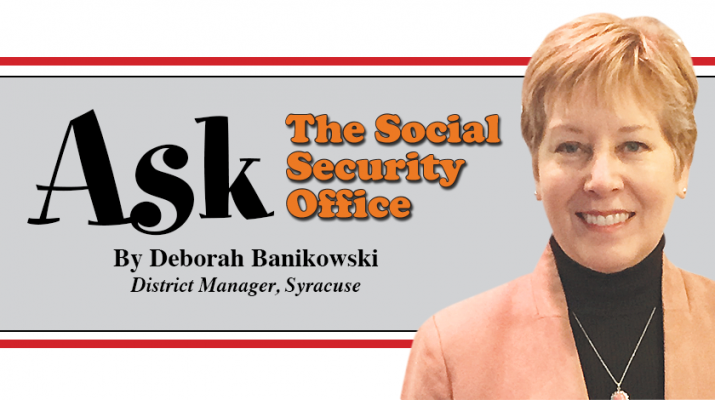By Deborah Banikowski
District Manager, Syracuse
With more people learning online, we would like to highlight some of the digital resources we have for educators. Chances are a student will know someone who receives retirement or disability benefits. This could be a way to relate our many programs to a new audience. Showing young people that our programs help wounded warriors and children with disabilities can help them develop greater empathy and provide a path to inspired learning.
We offer an educator’s toolkit teachers can use to engage students and educate them on our programs. The toolkit includes:
• Lesson plans with objectives;
• Infographics and handouts for each lesson plan;
• Links to Social Security web pages;
• Talking points; and
• Quiz questions and answers.
You can access the toolkit at www.ssa.gov/thirdparty/educators.html.
Parents are a child’s first educators. You can use our toolkit to introduce your child or grandchild to the importance of having a social safety net for hardworking Americans.
We value and welcome the efforts all teachers make to educate America’s young people, and we want to help spark discussions with students about the benefits Social Security provides to millions of people. Please share our toolkit with your favorite educators today.
Q&A
Q: My child, who gets Social Security, will be attending his last year of high school in the fall. He turns 19 in a few months. Do I need to fill out a form for his benefits to continue?
A: Yes. You should receive a form, SSA-1372-BK, in the mail about three months before your son’s birthday. Your son needs to complete the form and take it to his school’s office for certification. Then, you need to return page two and the certified page three back to Social Security for processing. If you can’t find the form we mailed to you, you can find it online at: www.socialsecurity.gov/forms/ssa-1372.pdf.
Q: How can I get a copy of my Social Security Statement?
A: You can get your personal Social Security Statement online by using your personal account. If you don’t yet have an account, you can easily create one. Your online statement gives you secure and convenient access to your earnings records. It also shows estimates for retirement, disability, and survivors benefits you and your family may be eligible for.
To set up or use your account to get your online Social Security Statement, go to www.socialsecurity.gov/myaccount.
We also mail statements to workers age 60 and over who aren’t receiving Social Security benefits and do not yet have a my Social Security account. We mail the statements three months prior to your birthday.
Q: How are my retirement benefits calculated?
A: Your Social Security benefits are based on earnings averaged over your lifetime. Your actual earnings are first adjusted or “indexed” to account for changes in average wages since the year the earnings were received. Then we calculate your average monthly indexed earnings during the 35 years in which you earned the most. We apply a formula to these earnings and arrive at your basic benefit. This is the amount you would receive at your full retirement age. You may be able to estimate your benefit by using our Retirement Estimator, which offers estimates based on your Social Security earnings. You can find the Retirement Estimator at www.socialsecurity.gov/estimator.
Q: I get Social Security because of a disability. How often will my case be reviewed to determine if I’m still eligible?
A: How often we review your medical condition depends on how severe it is and the likelihood it will improve. Your award notice tells you when you can expect your first review using the following terminology:
• Medical improvement expected — If your condition is expected to improve within a specific time, your first review will be six to 18 months after you started getting disability benefits.
• Medical improvement possible — If improvement in your medical condition is possible, your case will be reviewed about every three years.
• Medical improvement not expected — If your medical condition is unlikely to improve, your case will be reviewed about once every five to seven years.
For more information, visit www.socialsecurity.gov.

